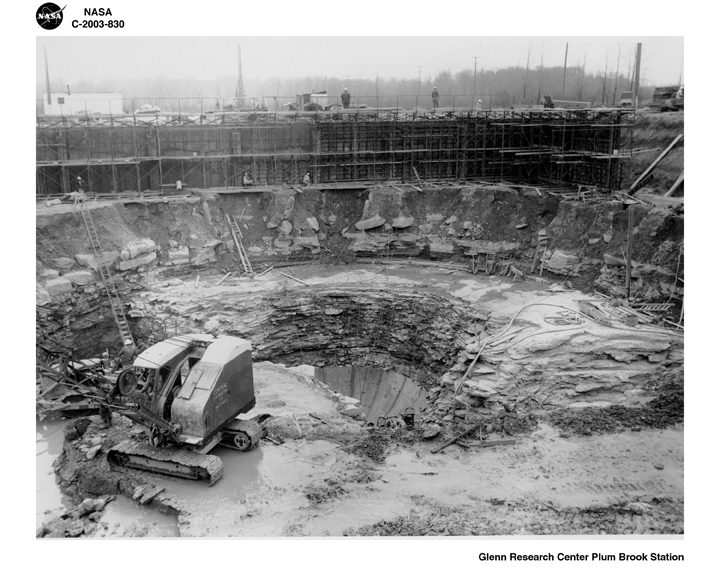Space History Photo: Crews Excavate A Hole In The Ground

In this historical photo from the U.S. space agency, the beginning of the Plum Brook Reactor Facility construction is pictured when crews excavated a hole in the ground for the pressure tank. The tank extended approximately thirty-two feet underground. The steel containment vessel, which was more than 100 feet high (fifty-five feet above grade and fifty-six below grade), surrounded the reactor tank area and the surrounding quadrants and canals.
It was designed to prevent any radioactivity from being released if an accident were to occur in the reactor. This safety precaution was essential because of the nearby communities. Many other large reactors did not have such safety features. For example, the Materials Test Reactor in Idaho Falls had no shield because small amounts of contamination could be released into the atmosphere without endangering the public.
For more information browse the Plum Brook Facility Page.
Each weekday, SPACE.com looks back at the history of spaceflight through photos (archive).
Breaking space news, the latest updates on rocket launches, skywatching events and more!

The National Aeronautics and Space Administration (NASA) is the U.S. government agency in charge of the civilian space program as well as aeronautics and aerospace research. Founded in 1958, NASA is a civilian space agency aimed at exploring the universe with space telescopes, satellites, robotic spacecraft, astronauts and more. The space agency has 10 major centers based across the U.S. and launches robotic and crewed missions from the Kennedy Space Center in Cape Canaveral Florida. Its astronaut corps is based at the Johnson Space Center in Houston. To follow NASA's latest mission, follow the space agency on Twitter or any other social channel, visit: nasa.gov.
